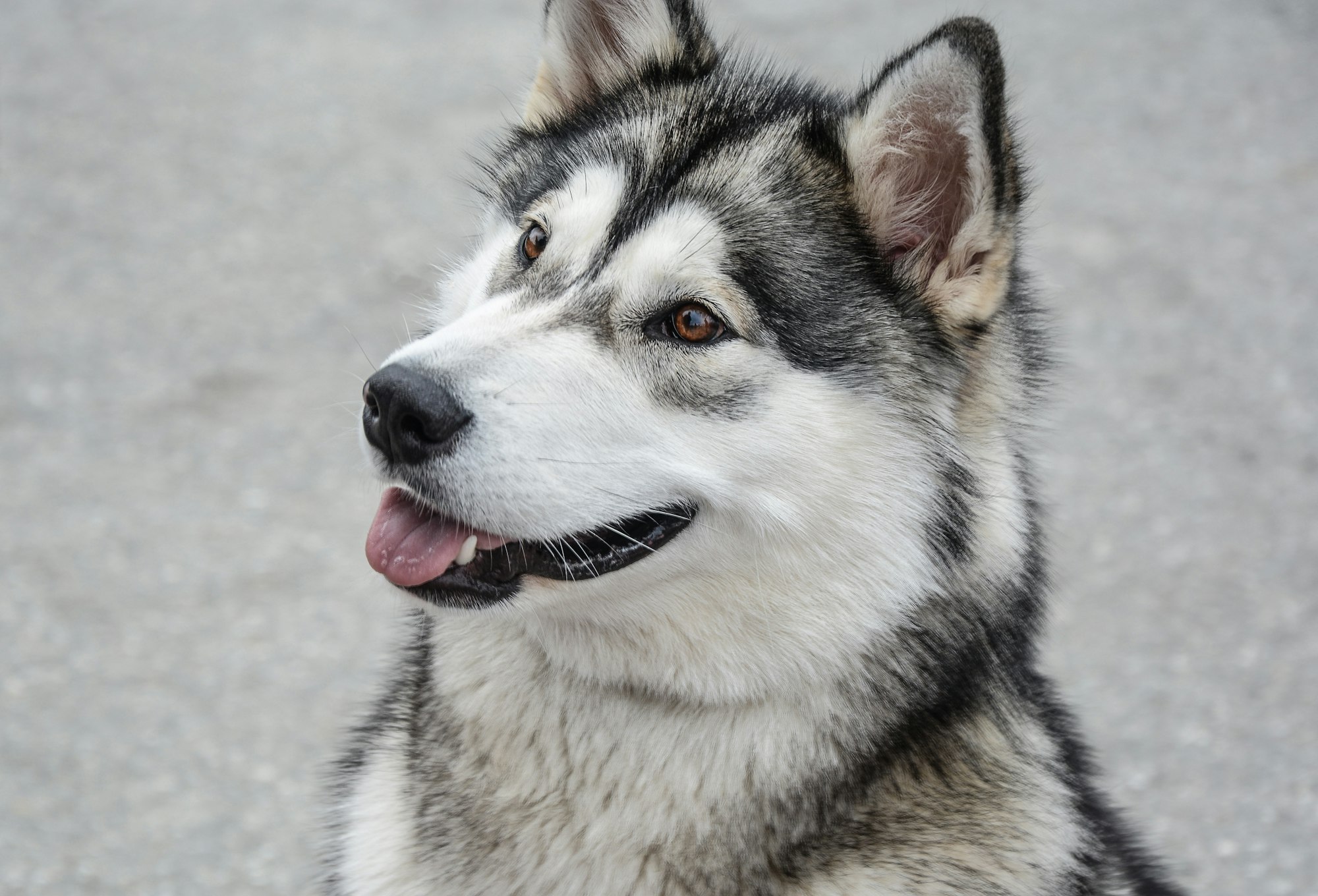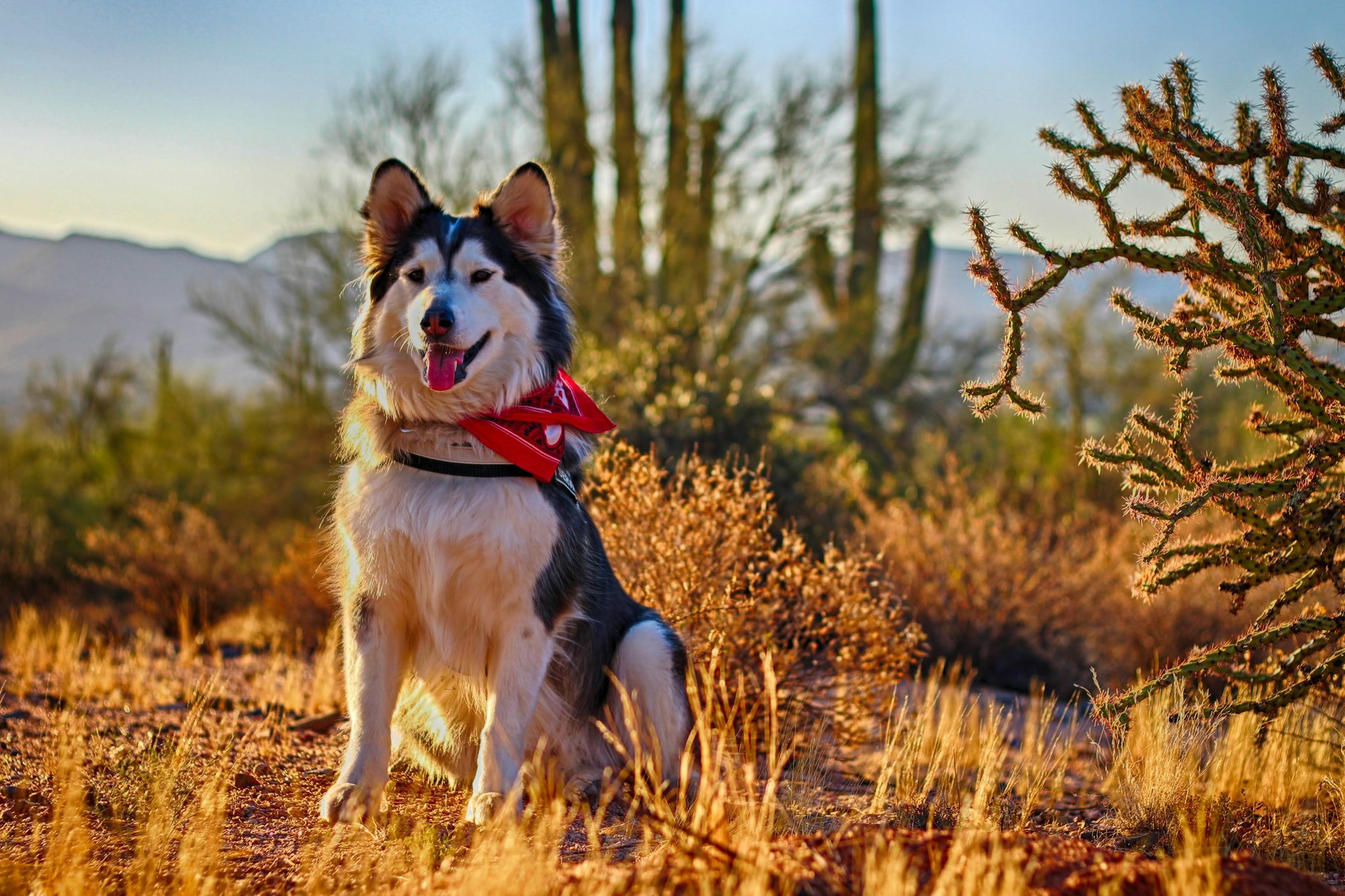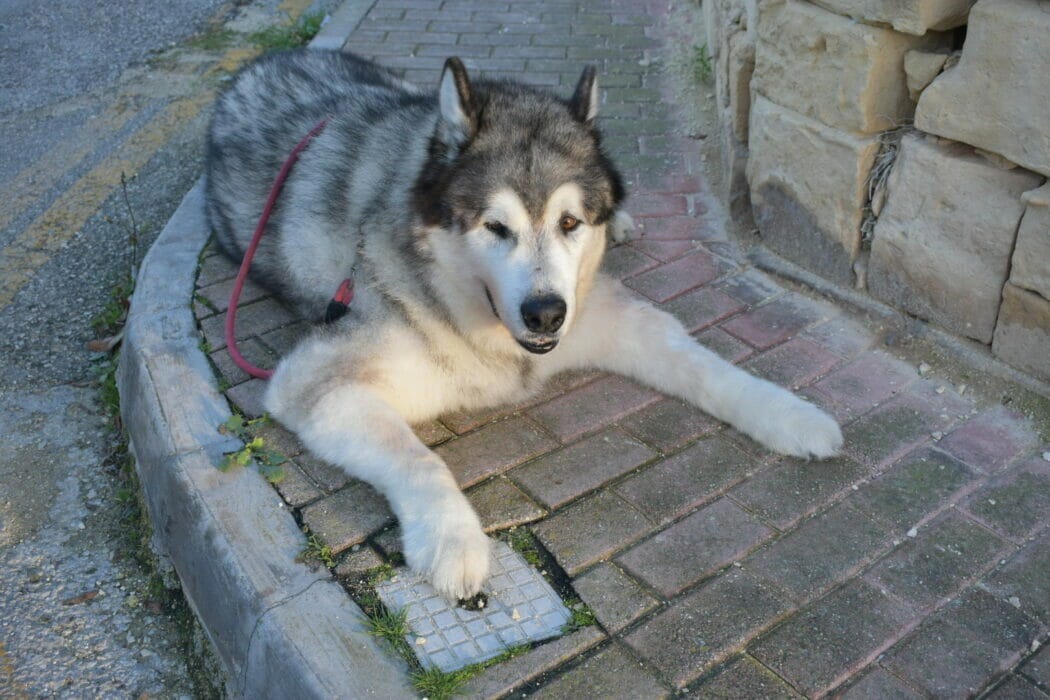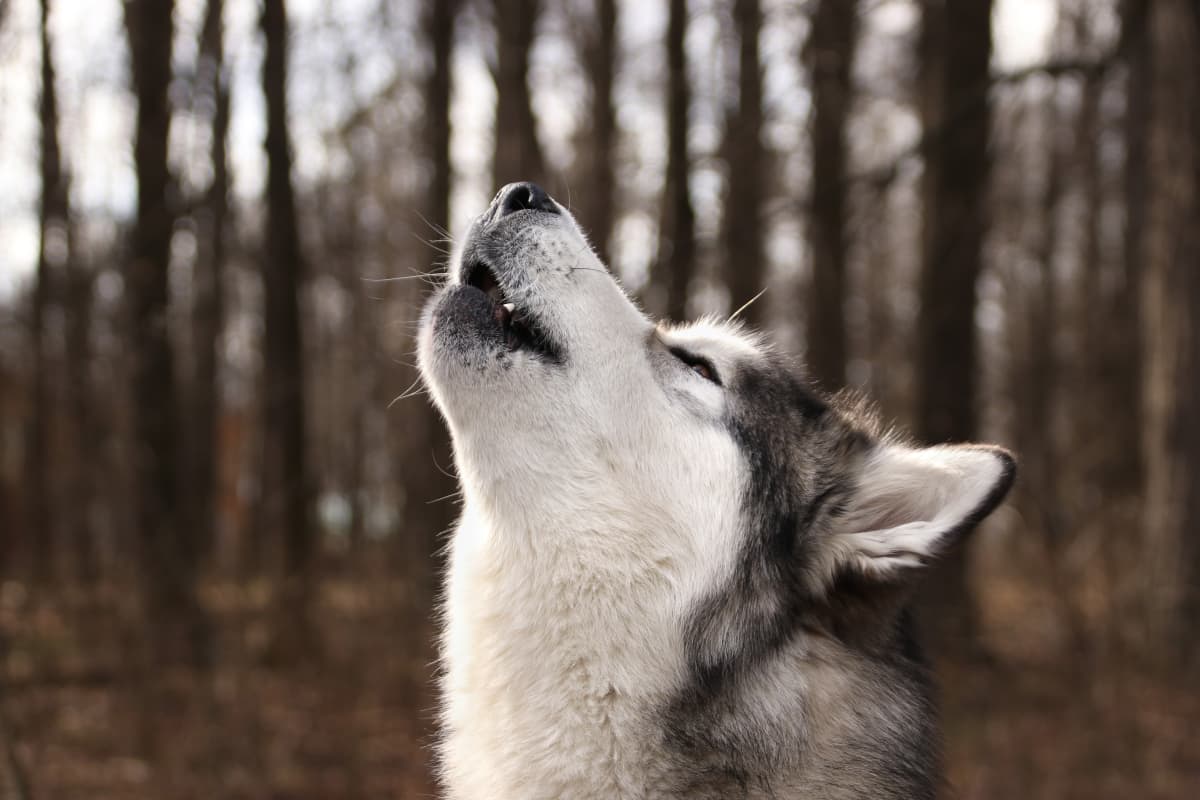Alaskan Malamutes are known for their thick fur coats that keep them warm in cold weather. However, many people wonder if these dogs can survive in hot climates. The answer is not a simple yes or no, as there are several factors to consider.
Firstly, it's important to note that Alaskan Malamutes are bred for cold weather and have a double coat that insulates them from the cold. This means that they are not well-suited for hot weather, especially if they are not acclimated to it. Additionally, their thick coats can make it difficult for them to regulate their body temperature in warmer climates.
However, with proper care and attention, Alaskan Malamutes can live in hot weather. It's important to keep them cool and hydrated, and to avoid leaving them outside for extended periods of time during the hottest parts of the day. Regular grooming can also help to keep their coats from becoming too thick and heavy. Overall, while Alaskan Malamutes may not be the best choice for those living in hot climates, they can still thrive with the right care and attention.
Alaskan Malamute Adaptability
Thermoregulation in Dogs
Thermoregulation is the ability of an animal to regulate its body temperature. Dogs have a unique ability to regulate their body temperature through panting, sweating through their paw pads, and adjusting their fur. Alaskan Malamutes, being a northern breed, have a thick double coat that keeps them warm in cold weather. However, this coat can also make them susceptible to heatstroke in hot weather.
Malamute Origin and Climate Adaptation
Alaskan Malamutes were originally bred by the Mahlemut Inuit people of Alaska to pull heavy loads in harsh winter conditions. They are known for their strength, endurance, and ability to survive in extremely cold weather. However, they are not well-suited for hot climates due to their thick coat and their lack of sweat glands.
While some Malamutes may adapt to living in hot weather, it is not recommended to keep them in such conditions. If you live in a hot climate and still want to own a Malamute, it is important to take extra precautions to keep them cool, such as providing shade, plenty of water, and avoiding strenuous exercise during the hottest parts of the day.
Overall, while Alaskan Malamutes are adaptable dogs, they are best suited for cooler climates and may struggle to live in hot weather. It is important for potential owners to consider their living environment before deciding to bring a Malamute into their home.
Challenges of Hot Weather
Alaskan Malamutes are a breed originally from the Arctic region, which means they are well adapted to cold weather. However, they may face several challenges when living in hot weather conditions.
Overheating Risks
Alaskan Malamutes have a thick double coat that is designed to protect them from the cold. However, this coat can also make them prone to overheating in hot weather. When the temperature rises, the dog's body temperature can also increase quickly, leading to heat exhaustion or heatstroke.
Dehydration and Heatstroke
In hot weather, it is essential to keep your Alaskan Malamute hydrated. Dehydration can lead to several health problems, including kidney damage and heatstroke. Heatstroke is a severe condition that can cause organ failure, seizures, and even death. It is crucial to ensure that your dog has access to fresh water at all times and avoid strenuous activities during the hottest part of the day.
Paw Pad Burns
Walking on hot pavement or sand can cause paw pad burns in Alaskan Malamutes. These burns can be painful and take a long time to heal. It is essential to avoid walking your dog on hot surfaces during the hottest part of the day. Consider walking your dog early in the morning or late in the evening when the pavement is cooler.
In conclusion, while Alaskan Malamutes can live in hot weather, it is essential to take precautions to ensure their safety and well-being. Owners should be aware of the risks of overheating, dehydration, and paw pad burns and take steps to prevent them.
Managing Heat for Malamutes
Alaskan Malamutes are bred to thrive in cold climates and may struggle in hot weather. However, with proper management, they can still live comfortably in warmer areas. Here are some tips for managing heat for Malamutes.
Proper Hydration
One of the most important things to keep in mind when managing heat for Malamutes is proper hydration. Make sure your Malamute has access to clean water at all times, and consider adding ice cubes to their water bowl to keep it cool. You can also offer them water-rich foods like watermelon or cucumbers.
Indoor Cooling Techniques
When the temperature rises, it's important to keep your Malamute cool indoors. You can use air conditioning, fans, or even a cooling mat to help them beat the heat. It's also a good idea to keep them in a well-ventilated area and avoid leaving them in a hot car or enclosed space.
Outdoor Shade and Water Access
If your Malamute spends time outdoors, make sure they have access to shade and water. Provide a shaded area with a cool surface for them to lie on, and consider using a kiddie pool or sprinkler to keep them cool. It's also important to avoid exercising them during the hottest parts of the day and to watch for signs of overheating, such as excessive panting or lethargy.
By following these tips, you can help your Malamute stay comfortable and healthy in warmer weather.
Health Considerations

Regular Veterinary Check-ups
Alaskan Malamutes are generally healthy dogs, but it is important to schedule regular check-ups with a veterinarian to ensure that they are maintaining good health. During these visits, the vet can assess the dog's overall health, including their weight, coat, and teeth. They can also check for any underlying conditions that may be exacerbated by hot weather, such as heart or respiratory problems.
Monitoring for Heat Stress Symptoms
Alaskan Malamutes are bred to live in cold weather, and they may struggle in hot and humid conditions. It is important to monitor them for signs of heat stress, which can include excessive panting, drooling, lethargy, and vomiting. If your dog is showing any of these symptoms, it is important to take steps to cool them down immediately, such as providing them with plenty of water and shade, or even using a cooling vest.
It is also important to never leave your dog in a hot car, as the temperature inside a car can rise quickly and become life-threatening. By being aware of the signs of heat stress and taking steps to prevent it, you can help ensure that your Alaskan Malamute stays healthy and happy in hot weather.
Grooming and Care
Coat Maintenance
Alaskan Malamutes have a thick double coat that helps them survive in cold weather. However, this coat can be problematic in hot weather. It is important to keep their coats clean and well-maintained to help them regulate their body temperature. Regular brushing is essential to remove any loose fur and prevent matting. It is recommended to use a slicker brush and a metal comb to remove any tangles and mats.
During hot weather, it is important to keep the coat trimmed to help reduce the amount of insulation. However, it is important to avoid shaving the coat completely as it can cause sunburn and skin irritation. Instead, a professional groomer can help trim the coat to a shorter length while still maintaining its protective properties.
Sun Protection
Alaskan Malamutes have sensitive skin that can easily be damaged by the sun's rays. It is important to protect their skin by applying a dog-specific sunscreen to any exposed areas, such as the nose, ears, and belly. It is also important to provide shade and access to cool water to help them stay cool and hydrated during hot weather.
In addition to sunscreen, it is recommended to use a cooling vest or bandana to help regulate their body temperature. These products can be soaked in cold water and worn to help keep the dog cool. It is important to monitor the dog's behavior and body temperature during hot weather to ensure they are not overheating.
Overall, with proper grooming and care, Alaskan Malamutes can live in hot weather. It is important to take precautions to help them regulate their body temperature and protect their skin from the sun's harmful rays.
Exercise and Activity
Timing of Outdoor Activities
Alaskan Malamutes are known for their high energy levels and require regular exercise to maintain their physical and mental health. However, it is important to consider the timing of outdoor activities, especially in hot weather.
It is recommended to avoid exercising your Alaskan Malamute during the hottest parts of the day, typically between 11 am and 4 pm. Instead, opt for early morning or late evening walks when the temperature is cooler. This will help prevent heatstroke and other heat-related illnesses.
Appropriate Exercise Regimens
When it comes to exercise, it is important to tailor the regimen to your Alaskan Malamute's individual needs and abilities. While they are strong and athletic dogs, they can still overheat in hot weather.
Activities such as swimming, hiking, and playing in the shade can be great options for keeping your Alaskan Malamute active without putting them at risk of heat-related illnesses. It is also important to provide plenty of water and shade during outdoor activities.
Overall, with proper precautions and a tailored exercise regimen, Alaskan Malamutes can still enjoy outdoor activities in hot weather. However, it is important to monitor their behavior and physical condition to ensure they are not overheating.
Dietary Adjustments
Alaskan Malamutes are known to have a thick double coat that helps them survive in cold weather. However, this coat can be problematic in hot weather. To help your Alaskan Malamute cope with hot weather, dietary adjustments can be made to ensure they are getting the proper nutrients and hydration.
Firstly, it is important to provide your Alaskan Malamute with plenty of fresh, cool water to drink. This will help keep them hydrated and cool. It is recommended to provide water in a shaded area to prevent it from getting too warm.
Secondly, it is important to adjust their diet to include more water-rich foods such as cucumbers, watermelon, and celery. These foods can help keep your Alaskan Malamute hydrated and cool. It is also recommended to avoid feeding them high-protein diets as they can increase their metabolic heat production, making it harder for them to regulate their body temperature.
Lastly, it is important to avoid feeding your Alaskan Malamute during the hottest parts of the day. Feeding them during cooler parts of the day can help prevent overheating and ensure they are properly digesting their food.
By making these dietary adjustments, you can help your Alaskan Malamute cope with hot weather and ensure they are getting the proper nutrients and hydration they need to stay healthy.
Acclimation and Training
Acclimating an Alaskan Malamute to hot weather requires time and patience. It is important to start the process gradually, allowing the dog to adjust to the new environment slowly. One way to do this is to take the dog for short walks during the cooler parts of the day. Gradually increase the length of the walks and the time spent outside until the dog is comfortable in the heat.
Training can also play a role in helping an Alaskan Malamute adapt to hot weather. One way to do this is to provide the dog with plenty of water and shade during outdoor activities. Another way is to train the dog to rest in a cool, shaded area when it gets too hot.
It is important to note that not all Alaskan Malamutes will be able to adapt to hot weather. Some dogs may struggle with the heat and may require more extensive training and acclimation. It is also important to monitor the dog's behavior and health during hot weather to ensure that it is not experiencing any heat-related issues.
Overall, acclimation and training can help an Alaskan Malamute adapt to hot weather, but it is important to approach the process with caution and to monitor the dog's behavior and health closely.

Frequently Asked Questions
- Q1: What are the signs of heat intolerance in Alaskan Malamutes?
- Alaskan Malamutes are a cold-weather breed, and they are not well-suited for living in hot climates. Signs of heat intolerance in Alaskan Malamutes include panting, excessive drooling, lethargy, and vomiting. It is important to monitor your Alaskan Malamute closely for these signs, especially during hot weather.
- Q2: How can you help an Alaskan Malamute stay cool in a warm climate?
- To help an Alaskan Malamute stay cool in a warm climate, provide plenty of fresh water and shade. You can also use cooling mats or vests to help regulate their body temperature. It is important to avoid exercising your Alaskan Malamute during the hottest parts of the day and to keep them indoors in air-conditioned rooms when possible.
- Q3: What are the best practices for caring for Alaskan Malamutes in hot weather?
- The best practices for caring for Alaskan Malamutes in hot weather include providing plenty of water and shade, avoiding exercise during the hottest parts of the day, and keeping them indoors in air-conditioned rooms when possible. It is also important to monitor your Alaskan Malamute closely for signs of heat intolerance and to seek veterinary care if necessary.
- Q4: How does an Alaskan Malamute's heat cycle affect its ability to live in warm temperatures?
- An Alaskan Malamute's heat cycle can make it more difficult for them to regulate their body temperature in warm temperatures. During their heat cycle, Alaskan Malamutes may be more prone to overheating and may require extra care to stay cool.
- Q5: What are the differences in temperature tolerance between Alaskan Malamutes and Huskies?
- Alaskan Malamutes and Huskies are both cold-weather breeds, but Alaskan Malamutes are generally less tolerant of hot temperatures than Huskies. While both breeds require extra care in warm climates, Alaskan Malamutes may be more prone to heat intolerance and may require more frequent breaks in the shade and access to cool water.
- Q6: Can Alaskan Malamutes acclimate to living in states with high temperatures like Texas or Florida?
- While it is possible for Alaskan Malamutes to acclimate to living in states with high temperatures like Texas or Florida, it is not recommended. Alaskan Malamutes are not well-suited for hot climates and may experience health problems if exposed to prolonged periods of heat. It is important to provide extra care and attention to Alaskan Malamutes living in warm climates to ensure their health and well-being.
More articles about Alaskan Malamutes:




